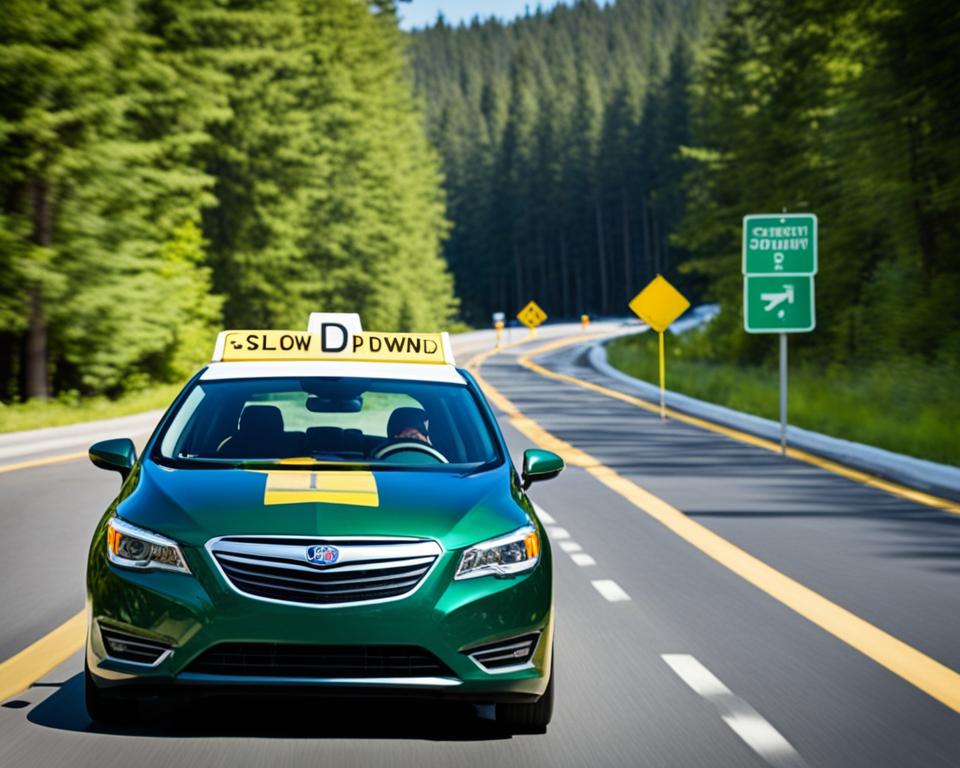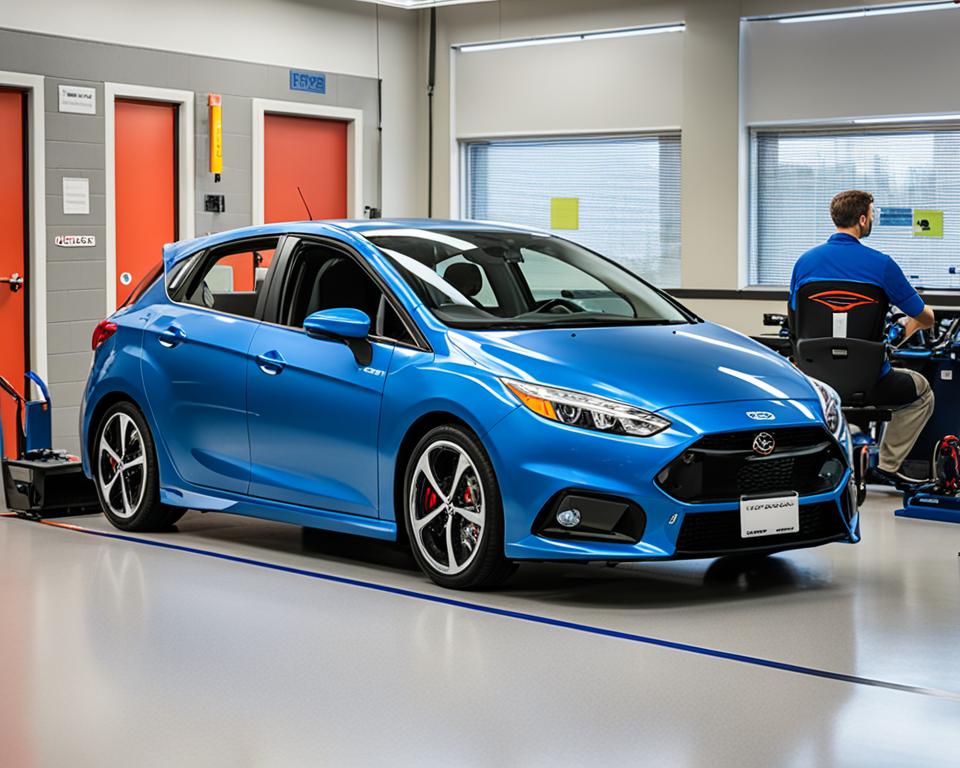Learning to drive is a key skill for life. It doesn’t matter if you like the easy automatic or the fun manual. But, one thing is sure: good training is key for safe and confident driving. This guide looks at automatic and manual driving lessons. It shows how skilled instructors help new and experienced drivers become better on the road.
Read interesting things at : vsocan
Key Takeaways
- Discover the importance of proper driving instruction for both automatic and manual transmission vehicles.
- Understand the benefits of automatic and manual driving lessons, from enhanced vehicle control to cost-effective options.
- Learn about the qualifications and experience of expert driving instructors who provide comprehensive training.
- Explore the essential defensive driving techniques and road safety education covered in the lessons.
- Gain hands-on experience through behind-the-wheel practice and cutting-edge driving simulation programs.
Introduction to Driving Lessons
Learning to drive well takes the right training and education. Driving lessons are key for learning important skills and safe habits. They help new drivers and those looking to improve their skills drive with confidence.
Importance of Proper Training
Learning from licensed instructors is crucial for many reasons. It teaches learners about traffic rules and how to drive safely. Through behind-the-wheel practice, students improve their skills and learn to handle different driving situations safely.
Choosing Between Automatic and Manual Transmission
Choosing between automatic or manual transmission is a big decision for new drivers. Automatic lessons make learning easier by focusing on basic driving skills. On the other hand, manual driving instruction teaches more about controlling the vehicle. The choice depends on what you prefer, your future driving needs, and what’s available locally.
“Driving is a skill that requires practice, patience, and a willingness to learn. With the right road safety education, anyone can become a confident and responsible driver.”
Benefits of Automatic Driving Lessons
Learning to drive with automatic lessons has many perks for beginners. One big plus is how easy they are to use. Automatic cars let learners work on steering, speeding up, and slowing down without worrying about the clutch and gearshift.
Automatic cars are great for people who have trouble with their physical abilities or coordination. They don’t need the left foot to work the clutch like in manual cars. This makes automatic lessons a good choice for many different learners.
| Benefit | Explanation |
|---|---|
| Ease of Operation | Automatic transmissions make driving simpler, letting learners focus on key skills without the manual gearbox’s complexity. |
| Suitability for Beginners | Automatic driving lessons are perfect for new drivers, offering a smooth start to driving. |
| Accessibility | Automatic cars welcome a broader range of learners, including those facing physical or coordination issues. |
Choosing automatic driving lessons helps beginners build skills in a less stressful way. This helps them gain confidence and skill before maybe trying a manual car later. This method can make drivers safer and more skilled on the road.
“Automatic driving lessons provide a seamless and accessible pathway for new drivers to develop essential skills and prepare for the road ahead.”
Advantages of Manual Driving Instruction
Choosing manual driving lessons over automatic ones has clear benefits. Learning to drive a manual car gives you more control and a better understanding of your car. This skill is key for anyone wanting to drive well.
Enhanced Vehicle Control
Driving a car with a manual transmission means you’re more involved in the process. This hands-on approach gives you control over the car’s performance. You can handle tough roads and complex moves better.
Being able to shift gears yourself makes driving more engaging. It also creates a stronger bond between you and your car.
Cost-Effective Option
Manual driving lessons are often cheaper than automatic ones. Since manual cars are simpler, they cost less to maintain and repair. This means you can save money on lessons.
This makes manual driving a smart choice for those watching their budget. It’s a way to learn to drive without spending a lot.
| Feature | Manual Driving Lessons | Automatic Driving Lessons |
|---|---|---|
| Vehicle Control | Higher level of engagement and control | Easier to operate, but less hands-on control |
| Cost | More cost-effective | Often more expensive |
| Skill Development | Develops a deeper understanding of vehicle mechanics | Focuses more on general driving skills |
When thinking about learning to drive, consider the benefits of manual lessons. They offer a way to improve your skills, save money, and enjoy driving more.
Expert Driving Instructors
Getting your driver’s license is a big step towards freedom. But, it’s key to learn from those who know their stuff. Defensive driving courses and road safety education are taught by licensed instructors. They make sure you learn how to drive safely and responsibly.
Qualifications and Experience
Good driving lessons come from instructors who are well-trained and certified. These licensed instructors know all about traffic laws and how to drive safely. They teach you how to avoid dangers and drive safely.
- Comprehensive training in traffic laws, defensive driving, and vehicle operation
- Certification from recognized driving instruction programs
- Years of hands-on experience guiding students through the driving process
- Patience and adaptability to accommodate different learning styles
- Commitment to road safety and a track record of producing safe, confident drivers
Choosing these experts means you’ll get the best help to become a great driver. You’ll learn to handle different driving situations safely.
“The best driving instructors don’t just teach you how to pass the test; they instill the habits and mindset needed to be a safe and responsible driver for life.”
| Instructor Qualifications | Importance |
|---|---|
| Comprehensive Training | Ensures deep understanding of traffic laws, defensive driving techniques, and vehicle operation |
| Recognized Certification | Validates the instructor’s expertise and adherence to industry standards |
| Extensive Experience | Provides the practical knowledge and skills to guide students effectively |
| Adaptability and Patience | Enables the instructor to cater to diverse learning styles and support students’ progress |
Defensive Driving Techniques
Learning defensive driving techniques is key to handling our roads safely. By driving proactively, we can lower the risks from unpredictable situations and reckless drivers. These skills are vital for road safety education and help us drive safely and responsibly.
At the core of defensive driving is the idea of being proactive. Instructors teach students how to stay alert and react quickly to dangers. They focus on:
- Maintaining a safe following distance to react fast
- Scanning the road ahead for obstacles or hazards
- Adjusting speed and positioning for traffic and weather changes
- Being cautious at intersections, merging lanes, and blind spots
By learning from defensive driving courses, students become more confident and skilled on the road. They make better decisions and reduce accident risks. This approach to learning helps drivers be proactive, responsive, and responsible, making our roads safer for everyone.
“Defensive driving is not just a skill, it’s a mindset – a commitment to being alert, anticipating the unexpected, and prioritizing the safety of oneself and others on the road.”
Road Safety Education
Improving road safety starts with teaching drivers how to drive responsibly. Road safety education is key. It gives drivers the skills to drive safely on our roads.
Traffic Rules and Regulations
Knowing and following traffic rules is crucial for road safety. Drivers need to understand traffic signs, speed limits, and right-of-way rules. This keeps everyone on the road safe.
- Comprehensive coverage of traffic signs and their meanings
- Instruction on right-of-way procedures at intersections and crossings
- Education on speed limits and the importance of driving at appropriate speeds
- Guidance on safely sharing the road with other vehicles, pedestrians, and cyclists
Learning these important parts helps drivers make safe choices. This leads to a safer and smoother drive for everyone.
| Defensive Driving Techniques | Benefits |
|---|---|
| Maintaining a safe following distance | Allows for increased reaction time and safer braking |
| Anticipating potential hazards | Enables proactive decision-making and risk mitigation |
| Proper lane positioning and merging | Enhances visibility and reduces the likelihood of collisions |
| Attentive and focused driving | Minimizes distractions and ensures full control of the vehicle |
Adding defensive driving techniques to safety education helps drivers stay safe and responsible on the road.
“Road safety education is not just about learning the rules of the road; it’s about developing a mindset that prioritizes the well-being of all road users.”

Behind-the-Wheel Practice
Learning to drive is more than just book knowledge. It’s where behind-the-wheel practice shines, letting new drivers improve their skills in real situations. This hands-on learning is key to mastering vehicle control and traffic skills.
During this training, learners get to put what they’ve learned into action. They learn about controlling the vehicle, navigating traffic, and defensive driving. This experience builds confidence and turns book knowledge into real skills.
- Familiarization with vehicle controls and mechanisms
- Maneuvering through different road conditions and traffic situations
- Practicing essential driving maneuvers, such as turning, merging, and parking
- Developing hazard perception and risk mitigation strategies
- Reinforcing good driving habits and decision-making skills
Combining theory with behind-the-wheel practice makes a driver proficient and confident. This interactive learning helps learners move from being new to being skilled. It leads to safer roads and better vehicle use.
| Aspect | Description |
|---|---|
| Vehicle Operation Skills | Develop proficiency in handling the vehicle, including acceleration, braking, steering, and gear shifting (for manual transmission) |
| Traffic Awareness | Learn to navigate through various traffic scenarios, such as intersections, merging lanes, and roundabouts |
| Hazard Perception | Cultivate the ability to anticipate and respond to potential hazards on the road, ensuring safe driving practices |
| Confidence Building | Gain confidence in making sound decisions and executing driving maneuvers through hands-on experience |
Comprehensive behind-the-wheel practice gives learners a full skill set. It makes them safe, responsible, and skilled drivers.
“The only way to learn to drive is to get behind the wheel and practice, practice, practice.”
Driving Simulation Programs
Driving simulation programs are changing how learner drivers learn. They use virtual reality to create a safe place for drivers to practice. This lets them get ready for real driving without the risks.
Virtual Reality Training
Virtual reality (VR) training makes learning to drive feel real. Learners wear VR headsets to drive through different places, like city streets and country roads. It’s safer than real driving, letting them practice without risk.
This tech does more than just help with driving skills. It lets learners face many driving situations, like bad weather and emergencies, safely. This helps them make quick decisions and act confidently on the road.
Driving simulation, including VR, is also cheaper and more efficient than traditional lessons. Learners can practice without needing cars, fuel, or an instructor. This makes learning easier and more flexible.
“Driving simulation programs, including virtual reality training, have revolutionized the way we approach learner driver training. By providing a safe, controlled, and immersive environment, these technologies empower aspiring drivers to develop their skills and confidence before hitting the roads.”
More people want better ways to learn to drive, so driving simulation is becoming more common. It combines with traditional lessons to give learners a full education. This helps them drive safely and responsibly.
Beginner Driver Programs
Learning to drive as a new driver can feel overwhelming. But, with the right training and support, it can be easy and empowering. Beginner driver programs are made for those starting their driving journey. They provide a structured and supportive place to learn.
These programs offer more than just how to drive a car. They teach new drivers about traffic rules, defensive driving, and important driving skills. This helps them become safe and responsible drivers.
One big plus of these programs is the chance to practice driving in a safe place. Trainees can improve their skills in a controlled setting. This way, they get more experience and learn how to drive well before driving on real roads.
“The best drivers are not born, they are made. Beginner driver programs are the foundation for creating confident, competent, and conscientious drivers.”
These programs also include classroom learning. They cover things like traffic laws, road signs, and defensive driving. This helps new drivers learn both practical skills and the importance of driving responsibly.
Whether you’re a teenager starting to drive or an adult learning for the first time, these programs are a great way to start. They offer a complete and supportive way to become a skilled and confident driver. By choosing this training, you’ll be ready to safely and confidently navigate the roads.

Vehicle Operation Skills
Learning how to operate a vehicle safely is key to becoming a good driver. It’s about more than just getting from point A to point B. It’s about handling the car with skill and confidence. This includes everything from dealing with traffic to making smooth turns.
Mastering Essential Maneuvers
Driving lessons give learners a chance to practice important car moves. These include:
- Smooth acceleration and deceleration
- Turning left and right with precision
- Parallel parking and reverse parking
- Changing lanes safely and effectively
- Navigating through intersections and roundabouts
With lots of behind-the-wheel practice, learners can get better at vehicle operation skills. They’ll build the muscle memory needed for these moves. This prepares them for driving in real life.
| Maneuver | Key Skills Developed |
|---|---|
| Smooth Acceleration/Deceleration | Throttle control, smooth braking, fuel efficiency |
| Turning Left/Right | Steering precision, lane positioning, signal usage |
| Parallel/Reverse Parking | Spatial awareness, vehicle positioning, mirror usage |
| Lane Changes | Shoulder checks, blind spot awareness, signal timing |
| Intersection/Roundabout Navigation | Right-of-way recognition, speed management, decision-making |
By learning these key vehicle operation skills through good learner driver training and lots of behind-the-wheel practice, students gain the confidence and skill to drive safely and responsibly.
Automatic and Manual Driving Lessons
Learners can choose between automatic and manual driving lessons. Each option has its own benefits. The choice depends on what the learner wants and their driving goals.
Automatic driving lessons are popular with many learners. They teach how to drive a car with an automatic transmission. This means no need for a clutch or manual gear changes. It’s great for those who want a simpler driving experience or find manual driving hard.
Manual driving lessons give a deeper understanding of controlling a car. Learners learn to use the clutch, change gears, and handle different driving situations. This is good for those who want to know more about how cars work or plan to drive in tough places.
| Automatic Driving Lessons | Manual Driving Instruction |
|---|---|
| Easier to operate, especially for beginners | Provides more control and understanding of vehicle mechanics |
| Suitable for those with physical limitations | Can be more cost-effective in the long run |
| Allows for a more relaxed driving experience | Prepares learners for a wider range of driving conditions |
It’s key to pick experienced and qualified driving instructors. They offer the right guidance and support. By choosing the right lessons, learners can get the skills and confidence to be safe and responsible drivers.
Choosing the Right Driving School
Choosing the right driving school is key to a good learning experience and safe driving habits. It’s important to look at the school’s reputation and what past students say.
Reputation and Reviews
Start by researching the school’s reputation. Look at online reviews and check with local consumer groups. Ask friends or family who learned there if they had a good experience.
A school known for its skilled and licensed teachers and safe drivers is a good choice. Look at what people say about the teaching style, customer service, and the learning environment.
Choosing a well-regarded driving school means you’ll get top-notch instruction and support. This helps you learn the skills and confidence to drive safely and responsibly.


